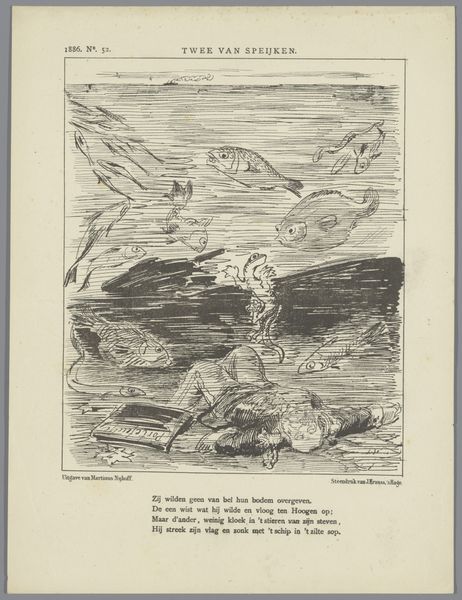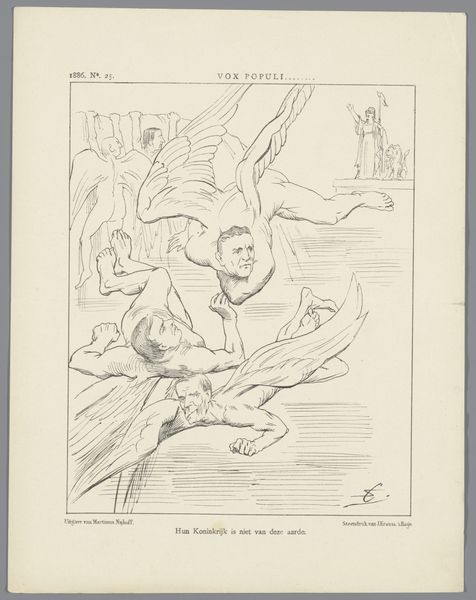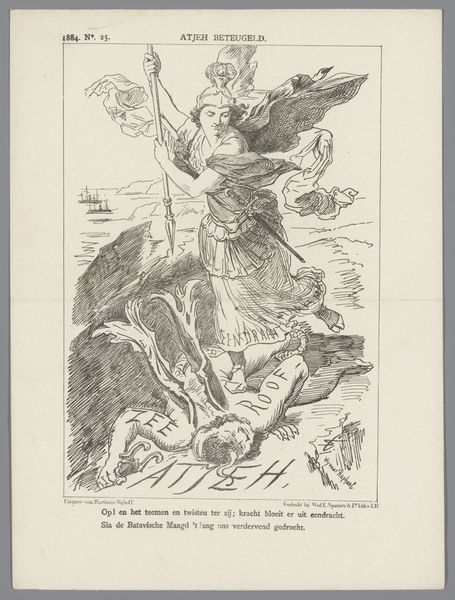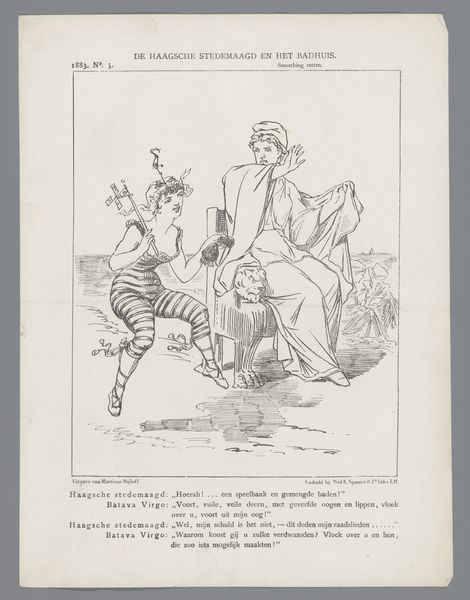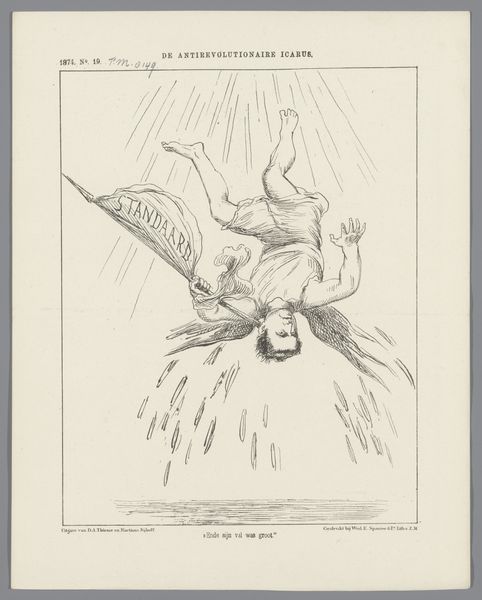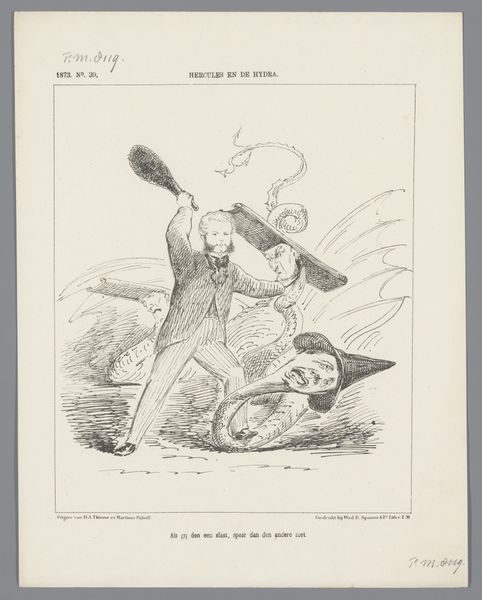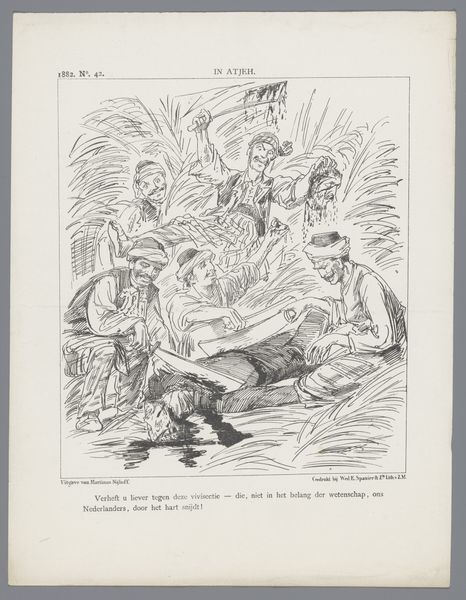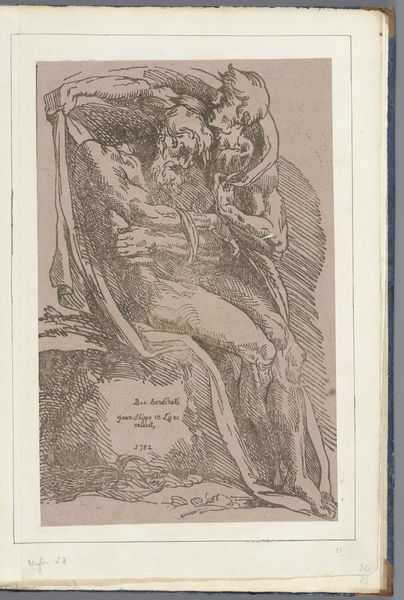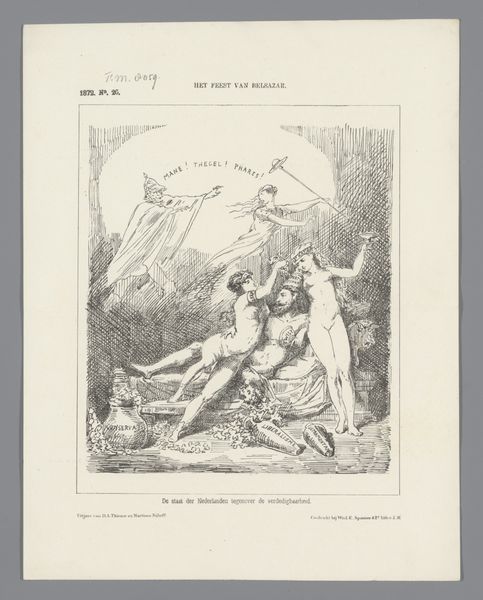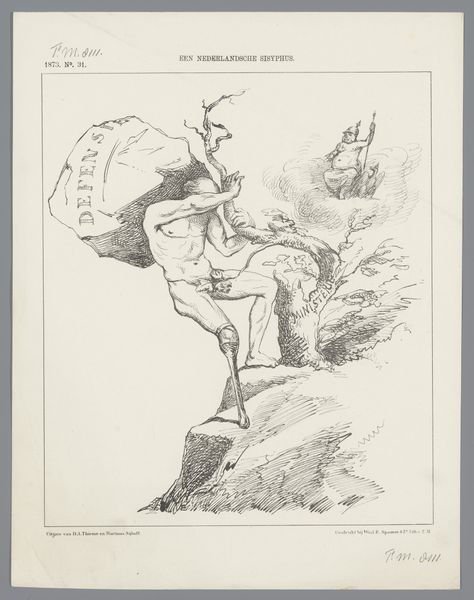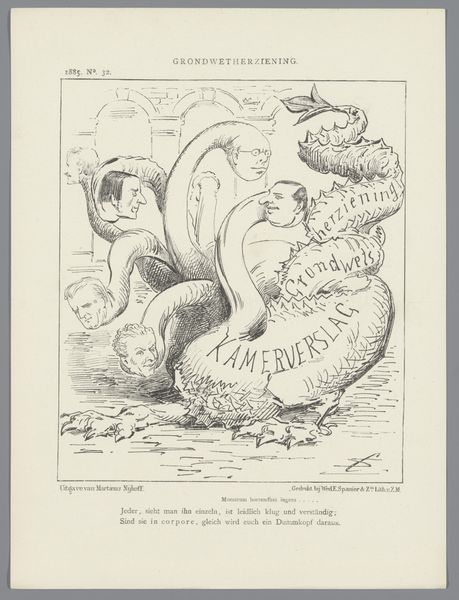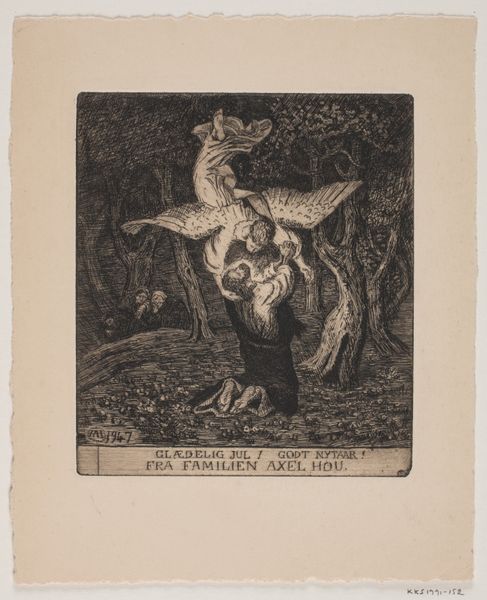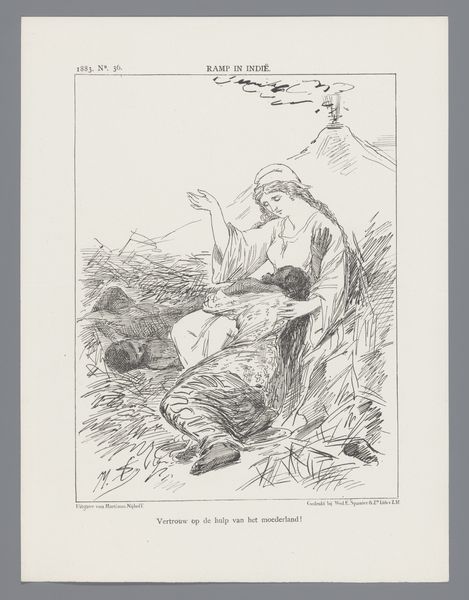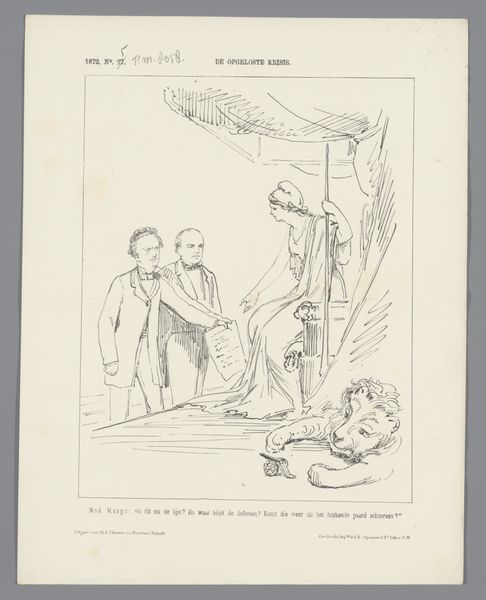
drawing, print, paper, ink
#
drawing
#
16_19th-century
#
narrative-art
# print
#
caricature
#
pencil sketch
#
figuration
#
paper
#
ink
#
symbolism
#
pencil work
Dimensions: height 275 mm, width 215 mm
Copyright: Rijks Museum: Open Domain
Editor: This drawing, "Politieke spotprent over Den Haag, 1882," by Johan Michaël Schmidt Crans, uses ink on paper. The first thing that strikes me is the sort of brutal imagery, this man being attacked by large birds. What do you see in this piece? Curator: The power of this image lies in its symbolic depth. Note the title: "De koloniale Tituos". Consider the Greek myth of Tityus, punished by Zeus, his liver eternally eaten by vultures. What does it tell us when that imagery reappears here? Editor: So, the man is like Tityus, and the birds are, well, vultures? The Dutch caption mentions ministers being threatened, too. It feels like an attack. Curator: Exactly. Political cartoons use cultural memory to express contemporary anxieties. The vultures – each is collared with the inscribed names of different politicians, I believe – embody the ceaseless pressure and perceived torment faced by those in power regarding "colonial" matters. Notice how the artist draws the birds in detail and the man more loosely. Editor: It’s like the policies they represent have more power. The drawing certainly becomes much more than just an illustration of an old story, right? Curator: Indeed. By linking to classical myth and societal anxiety, Crans creates a powerful critique using well-established symbols. The past, visually reinterpreted, comments sharply on the present. What do you think that reveals? Editor: How timeless some struggles are. It is still striking to see that this many years after it was created. I'll never see a caricature quite the same way again.
Comments
No comments
Be the first to comment and join the conversation on the ultimate creative platform.
